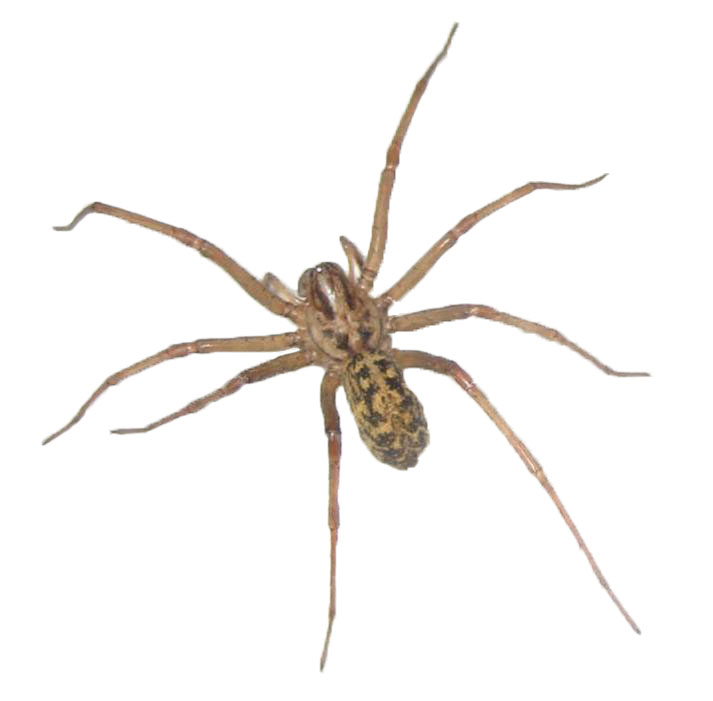Hobo Spider
The hobo, also known as the aggressive house spider, is a common one found in houses of the Pacific Northwest region. While not nearly as venomous as black widows, their bites may cause moderate epidermal damage and flu-like symptoms.
General Information
Hobo spiders get their common name from the belief that they spread throughout the United States by hitching lifts with people as they traveled along the highways. The hobo spider is not native to the United States. The spiders came from Europe in the 1930s and are currently present in around six states in the Pacific Northwest.
- Sometimes known as the American funnel web spider because of their distinctive, funnel-shaped webs, hobo spiders are very shy.
- Hobo spiders build funnel webs with an escape tunnel at the back that often goes into a crack or other protected area. They are not good climbers, so they usually stay near ground level.
- Hobo spiders build funnel webs with an escape tunnel at the back that often goes into a crack or other protected area. They are not good climbers, so they usually stay near ground level.
- Mating season lasts from June to October. At this time, male hobos may enter ground structures of buildings as they roam around and look for a mate. They do not live inside buildings.
- A hobo spider is unlikely to bite except when catching prey or in self-defense, for example, if it becomes trapped against a person’s skin.
- Hobo spiders are extremely protective of their egg sacs and will bite if they perceive a threat to their young.

Signs of Infestation
Your local Altus technician is trained to help manage hobo spiders and similar pests. Funnel-shaped webs and sighting the spider are signs of their presence. Since every building or home is different, your Altus technician will design a unique program for your situation.
Hobo Spider Bites
Hobo spiders bite in self-defense, causing headaches, blisters, and slow-healing lesions, although approximately half of those bitten showed no symptoms. While their bite may not be extreme, it could still be problematic for very young, elderly or those with compromised immune systems.
This brown arachnid’s bite is so painless that it is often initially overlooked. More than half of hobo spider bites are “dry,” meaning they don’t inject any venom (which is better reserved to kill food). Bites that actually involve venom may produce some itching and small lesions. Other symptoms of a hobo spider bite are weakness, temporary memory loss, nausea, fatigue, and vision impairment.
Although the bite of a hobo spider may be rare, it can be very serious and anyone suspecting a hobo spider bite should seek medical care immediately.
How Altus Pest Control Can Help Get Rid of Hobo Spiders
For those dealing with a serious hobo spider problem, professional pest control may be necessary. The team at Altus has experience handling troublesome pests of all kinds and can find a solution that fits with your home situation and needs.
